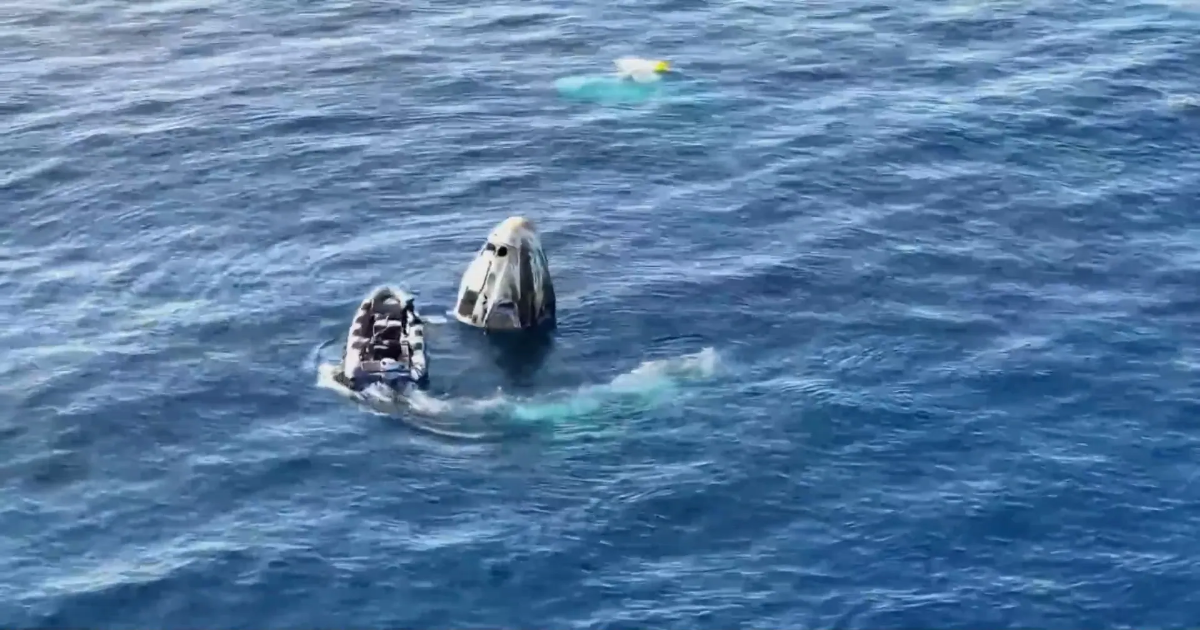
A SpaceX Dragon vehicle carrying four international astronauts on a commercial spaceflight around Earth’s poles has landed off the coast of California.
The water landing brings to an end a four-day mission known as Fram2 in which the private spacefarers sought to become the first humans to fly in orbit over both the North and South poles. Cryptocurrency billionaire Chun Wang financed and led the pioneering mission, which launched late Monday from Florida on a southern trajectory.
Joining Wang for the voyage was Norwegian filmmaker Jannicke Mikkelsen, German robotics researcher Rabea Rogge and Australian adventurer Eric Philips. None had ever been to space before.
The mission followed in the footsteps of other commercial billionaire-backed spaceflight ventures, including Inspiration4 and Polaris Dawn – both led by entrepreneur Jared Isaacman. The Fram2 crew even traveled aboard the same Dragon spacecraft that the Polaris Dawn crew rode to orbit in September for a five-day mission in which they completed a historic spacewalk, according to SpaceX.
Along the way, the Fram2 astronauts participated in multiple experiments to test how spaceflight affects the human body.
Fram2 mission: SpaceX video shows views of Earth’s poles during crypto billionaire-funded spaceflight
Fram2 astronauts land off coast of California
Wang and his crew landed on the Dragon spacecraft at 12:19 p.m. Friday in the North Pacific Ocean.
Elon Musk‘s SpaceX, which supplied the rocket and spacecraft for the mission, livestreamed the landing.
The splashdown comes four days after the Fram2 crew were propelled to orbit on the Dragon with assistance from a SpaceX Falcon 9 rocket, which blasted off at 9:46 p.m. EDT Monday from NASA’s Kennedy Space Center in Cape Canaveral.
After separating from the rocket, the Dragon spent the ensuing days using its own thrusters to zoom from pole to pole.
The landing off the coast of California represents another first for SpaceX human spaceflight. The March 18 landing of the Crew-9 mission, which included the Boeing Starliner astronauts, marked the final time a SpaceX Dragon would return off the coast of Florida, as SpaceX is moving recovery operations to California.
Following the parachute-assisted water landing, the four astronauts were planning to make their way out of the spacecraft on their own. The goal of the unassisted exit, according to SpaceX, was to “characterize the ability of astronauts to perform unassisted functional tasks after short and long durations in space,”
What was the Fram2 mission?
For the first time ever, the four astronauts aboard the Dragon set out to explore Earth’s poles from orbit.
Wang, a Malta-based entrepreneur who built his fortune with Bitcoin mining pools, paid an undisclosed amount of money to bankroll the mission with SpaceX.
Named after a Norwegian ship that traversed the North and South poles at the turn of the 20th century, the Fram2 mission sought to pay homage to its namesake with a pioneering polar voyage of its own.
Circling from pole to pole, the crew observed Earth’s polar regions from about 267 miles above the ground – an altitude that allowed the Dragon to fly from the North Pole to the South Pole in just more than 46 minutes. The Dragon traveled in a polar orbit at an inclination of 90 degrees, making it perpendicular to the equator.
Wang and his crew also conducted 22 research experiments related to human physiology in orbit that will provide insights for future long-duration missions deep into the cosmos.
Contributing: Brooke Edwards, Florida Today
Eric Lagatta covers breaking and trending news for USA TODAY. Reach him at [email protected]
